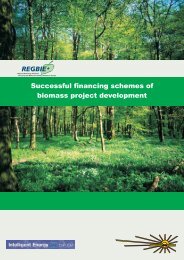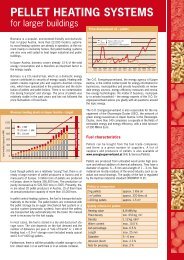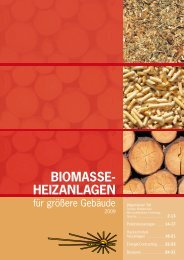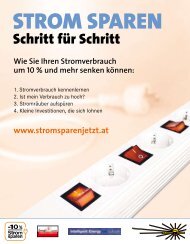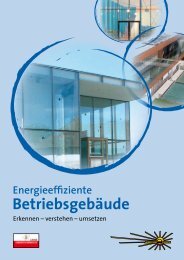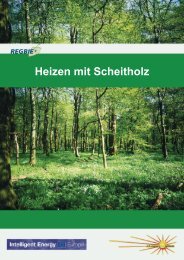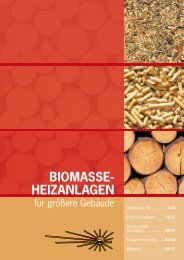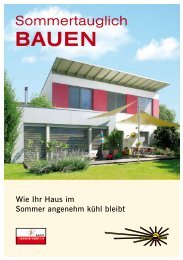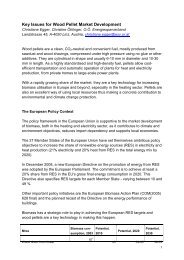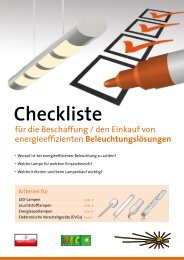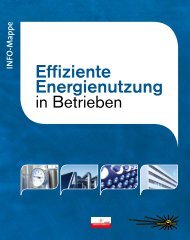Renewable Energy
Renewable Energy
Renewable Energy
You also want an ePaper? Increase the reach of your titles
YUMPU automatically turns print PDFs into web optimized ePapers that Google loves.
y-products, which represent 21% of the<br />
fuel, like the bundles of branches prepared<br />
by the Kone-Yijälä bundler, that are reduced<br />
to chips before burning as required for both<br />
combustion supply line automation and<br />
boiler efficiency. The volume of biofuels<br />
consumed these last 20 years has tripled in<br />
Finnish industry, and quadrupled in the sector<br />
of municipal CHP plants and thermal<br />
power plants.<br />
R E P O R T<br />
REPORT FROM CENTRAL FINLAND,<br />
THE MODEL PROVINCE<br />
FOR BIOENERGY IN A COUNTRY<br />
THAT’S WORLD LEADER<br />
IN THE SECTOR.<br />
the north. With its buildings and overhead<br />
conveyors seemingly stretching out forever<br />
along the Jämsä River, Jämsänkoski one of<br />
the biggest paper factories in Europe with a<br />
production of 800 000 tons a year. 15 km.<br />
downstream, its cousin in Kaipola, is almost<br />
as big. This is “Paper Valley”.<br />
These two sites alone absorb 4% of all of<br />
Finland’s electricity consumption. In order<br />
to improve their energy efficiency, a crucial<br />
element for this sector, they have been<br />
equipped with combined heat and power<br />
(CHP) plants with fluidised bed combustion<br />
(see article page 9). While their main job<br />
continues to be the production of steam for<br />
the industrial processes of the wood pulp<br />
and paper production units (a fraction supplies<br />
the district heating of the local village),<br />
their turbines cover approximately 8%<br />
of the plants’ electrical consumption. The<br />
Jämsänkoski CHP plant, representing<br />
46 megawatts of electricity (MWe), was<br />
commissioned in April 2002. It’s adapted for<br />
combustion of a biomass mix of various origins:<br />
industrial waste (trunk bark before<br />
transformation into pulp, black liquor (1) , etc.<br />
representing 28%), peat (41%, see article<br />
page 14), sawdust (6%), petrol (3%, to get<br />
the main boiler started up). As well as forestry<br />
Growing demand for forestry by-products<br />
Their potential is considerable, essentially in<br />
terms of forestry by-products, where the<br />
industrial bio-waste deposit is stable. In<br />
2001, they supplied 21.2 terawatt-hours<br />
(TWh) of energy, while wood chips resulting<br />
from wood cutting operations only counted<br />
for 1.9 TWh. The national objective for 2010<br />
is to bring this figure up to 10 TWh. A very<br />
conservative ambition, especially when the<br />
Finnish Forest Research Institute estimates<br />
technically collectable quantities (without<br />
taking costs into consideration) at more than<br />
three times that figure. The volume of<br />
burned wood chips already doubled last<br />
year on the national level, and tripled in the<br />
province of Central Finland alone, the leading<br />
consumer in Finland, exceeding one million<br />
cubic meters.<br />
It should be said that between 1995 and<br />
2001, the price of wood chips as “delivered<br />
to the power plant” dropped 20%, while the<br />
price of industrial bio-waste, even if it did<br />
stay 20% lower, increased by almost a third,<br />
accompanying a growing demand for biofuels.<br />
The authorities concentrated their efforts in<br />
the 1970s and 1980s on the rise in importance<br />
of peat, whose production costs have<br />
been cut in half since 1980, everyone’s attention<br />
is now turned to forestry by-products<br />
since a development program was launched<br />
in 1993. In this way, 42 million euros were<br />
invested between 1999 and 2003 in a wood<br />
energy technology development program<br />
“for machines as well as for optimisation of<br />
forestry industry waste collection methods”,<br />
points out Arvo Leinonen, Research Manager<br />
in this sector at the Technical Research<br />
Center of Finland (VTT) in Jyväskylä.<br />
Low cost by treatment right on site<br />
Transportation, which represents nearly half<br />
of the cost of these forestry fuels, is the key<br />
point to their profitability. Loaded by standard<br />
timber trucks, but in a manner that is<br />
also 1.5 times more dense than when<br />
branches are simply piled up, the bundles<br />
created on the lumbering sites spectacularly<br />
optimise production costs for this fuel.<br />
Treatment right on site, is also the added<br />
value of the mobile chippers that transform ><br />
The areas cleared of trees<br />
are replanted, and Finland's<br />
forest is expanding.<br />
(1) These are types of waste<br />
with mediocre energy content,<br />
normally recycled by combustion<br />
inside Finnish paper mills<br />
for environmental reasons.<br />
RENEWABLE ENERGY JOURNAL N°14 6



